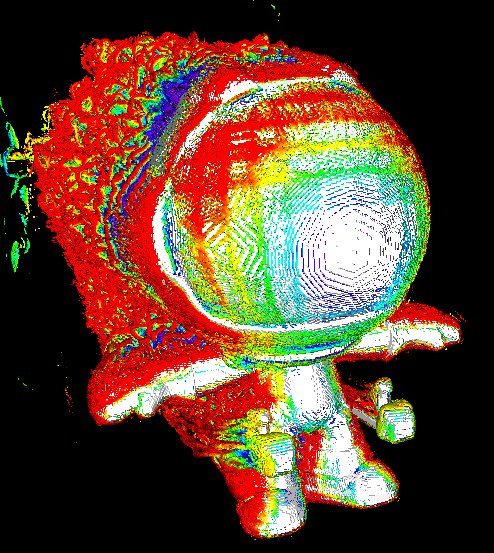What? They did have onboard sound. The problem is that if you used the motherboard speaker to make anything more decent than a beep, you basically needed to build an entire sound engine from scratch and very few games did so. It also wasn’t worthwhile because a shitty two pin speaker could not compare to the speakers of a professional sound system which you needed the soundcard to hook up into, and CPU bandwidth was such a limitation back then than even when games could play WAV they would use MIDI to offload the musical instrument synthesizing for the soundtracks to the sound card. Designing a game that used the onboard sound speaker was basically the realm of assembly hacking geniuses.
It also wasn’t worthwhile because a shitty two pin speaker
All speakers are two pins. 🤔 They were crappy because they were most often little piezoelectric speakers, or otherwise very small where they couldn’t play low frequency sounds well.
Dr. Sbaitso was the speech systhesis DOS program that was included with most Soundblaster cards. You could tell Dr. Sbaitso about all of your problems.
Oh yeah, I forgot about Soundblaster. They have that stupid card a Transformer name and none of us ever questioned it.
What a nightmare it was to have sound AND your CD drive drivers to load and leave enough memory for some of those nasty old DOS games. Felt like being a hacker.
(I might have realized I’m the old guy in the picture)
I built a config.sys file with a menu that then passed the menu choice on to autoexec.bat so I could choose at boot time between 3 configurations- one with expanded memory for older games that required it, one with extended memory for everyday use and newer games, and one with everything extra (including CD-ROM drivers) stripped away to maximize free conventional RAM for the one or two games that needed that…
How could you have a menu in config.sys?? I wasn’t aware that was even possible.
I don’t remember at this point… So I googled, this looks familiar: http://smallvoid.com/article/dos-multiple-configurations.html
And that dedicated sound cable for DVD CD drive to your soundblaster
And if that cable’s isolation was crap, you could hear your mouse movement through your speakers.
That also happened with the early onboard sound cards.
Oh wow. I totally forgot about those.
And then three things happened at once
- Creative de-facto monopolized the industry often by unethical means (suing Aureal into bankruptcy, etc.), not letting much room for competitors, which in turn lead to diminishing quality on the part of Creative.
- Microsoft didn’t put hardware acceleration support into XAudio, which superseeded DirectSound.
- Game publishers realized the vast majority of gamers didn’t care about sound quality, so they could spent those resources on making the games look a little bit more realistic.
Wait. When did onboard sound get good enough that you don’t need a soundcard? My computer is “only” 12ish years, and it has a soundcard. The reason used to be that internal ones sounded like shit.
I used to use a sound card until it died. When I researched how to get good sound I found most people use a DAC/amp combo now. But onboard is usually good enough. It was a noticable upgrade but not sure if it was worth the money.
In the grand scheme of things they were relatively inexpensive. You could spend a lot but you didn’t need to.
I still use an external Creative sound card so I can switch my speakers over USB between my work laptop and personal desktop!
I’m using a cheap one of those from amazon for my headphones on my laptop because the audio jack suddenly stopped recognizing when headphones were plugged in. (although I still get a dmesg error log when I stick a q-tip in to the jack? If anyone knows how to debug this, please tell me)
what was really cool were the few games that would give realistic* music and speech from the internal motherboard speaker. No daughterboards or external speakers required. This was 386 era, I think.
* realistic as much as could be from that tiny internal speaker and 8 bits of data.
Forgive me if I’m wrong, but I think the PC speaker was literally a 1-bit speaker. Anything that sounded more detailed was PWM on that one bit
That’s correct. Jesus they were awful yokes but they were really mostly intended for letting you know that your hardware was bollixed at boot time.
PC’s had mostly been business machines really until the 90s if my memory is correct.
If you wanted gaming you got a more gaming focused machine like an Amiga or console.
Yes, I remember these! Countdown And Tex Murphy: The Martian Memorandum come to mind. I remember being amazed at the sounds suddenly coming out of our internal computer speaker. It even had something close to speech!
The manual also came with some info on making the sound even better using some alligator clips, but that went waaaay over my little head at the time :)“Old lamps for new! Old lamps for new!”
I still hear this through my tinny onboard in my deepest dreams.
I was a rebel and went with the Pro Audio 16
My best friend gave me his sound blaster after upgrading to the Pro. Later I upgraded to a Gravis Ultrasound. Offloading sound processing to the sound card (1MB) improved gaming performance significantly.
220/5/1
1000 yard stare
When I was a kid we had 9 planets.
When I was a kind we had a future to look forward to
Long live the Gravis Ultrasound Max!
Back when MIDI and the quality of your synthesizer actually mattered!









